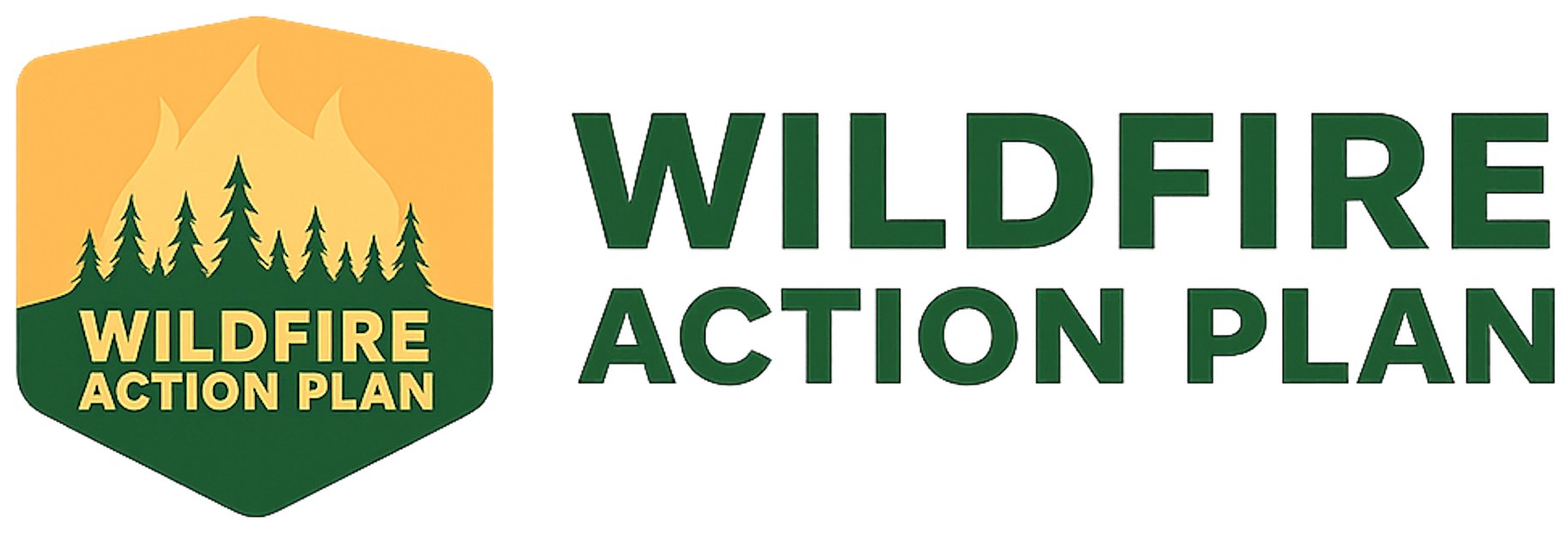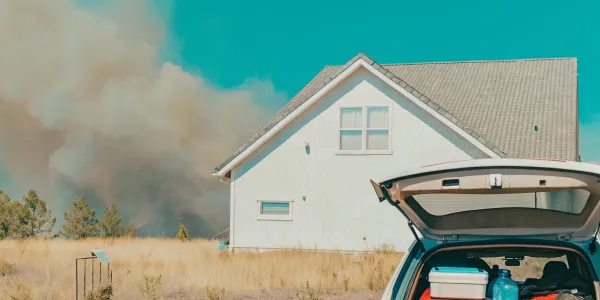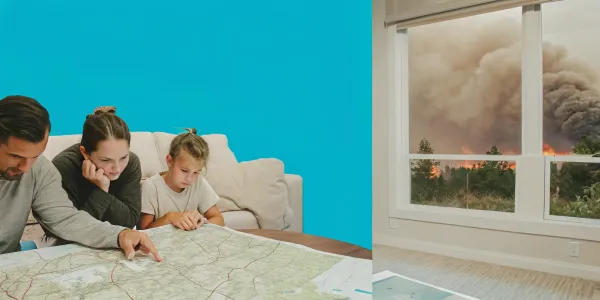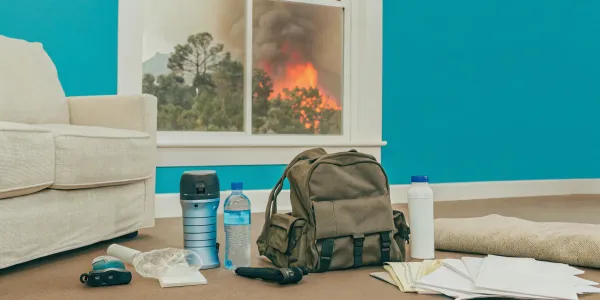Top 10 Wildfire Prevention Measures for Your Home
Protect your home with these top 10 wildfire prevention measures. Get practical steps to reduce risk, keep your property insurable, and stay prepared.
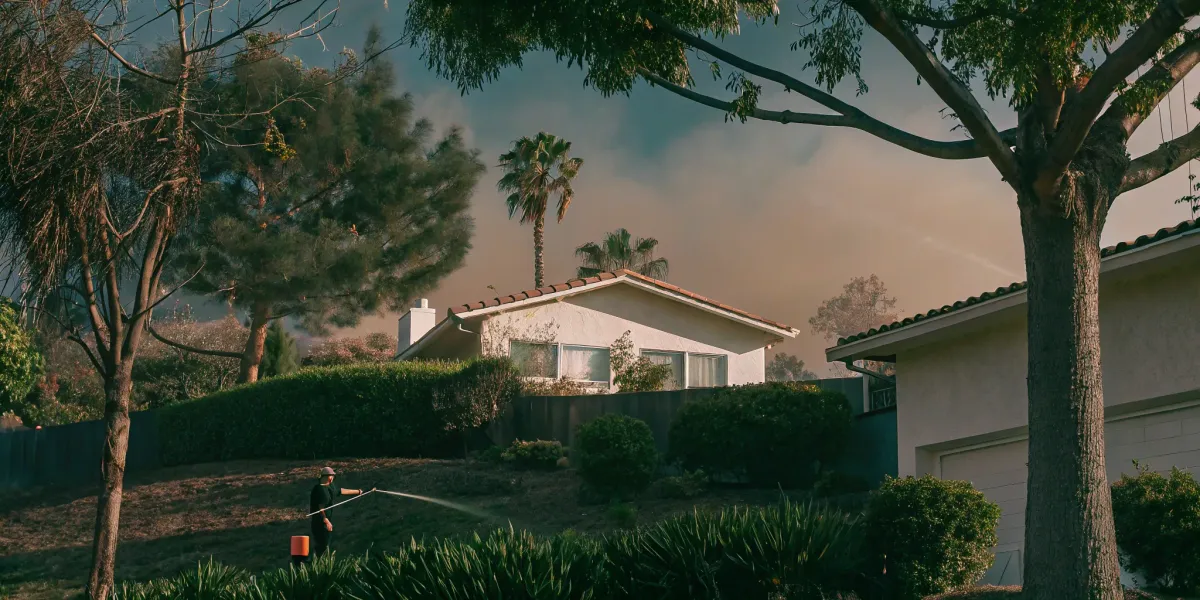
Your home’s safety doesn’t exist in a vacuum. It’s directly connected to your neighbor’s property, and theirs to the next. A single vulnerable house can create a domino effect that puts the entire community at risk. This is why a collective approach to fire safety is so powerful—and it’s something insurance companies are paying close attention to. When a neighborhood works together to clear brush, harden homes, and create a unified plan, it sends a clear message: we are a community that is actively reducing our risk. This guide is built to help you start that conversation and take meaningful action, both on your own property and with your neighbors. Here are the top 10 wildfire prevention measures that form the foundation of a resilient, insurable community.
Key Takeaways
- Focus on what stops embers: Your home's survival hinges on two key actions: creating defensible space to keep fire away and hardening your home with ember-resistant vents and materials to block ignition. These are the steps that give you the most control and make the biggest difference to insurers.
- Turn prevention into a simple routine: Instead of tackling a massive, one-time project, build small, consistent habits into your seasonal calendar. Regularly clearing your gutters, mowing the lawn, and inspecting the area around your foundation makes preparedness manageable and keeps your home constantly protected.
- Team up with your neighbors: A fire doesn't care about property lines, so your safety is linked to the homes around you. Creating a neighborhood action plan and working with your local fire department makes everyone safer and sends a powerful message to insurance companies that your community is a lower risk.
Why Prevention Is Your Best Policy
When you live with the threat of wildfire, it’s easy to feel powerless. But the reality is, you have more control than you think. According to the U.S. Department of the Interior, nearly nine out of ten wildfires are caused by people. This statistic isn't meant to place blame; it's meant to empower. If human activity can start fires, then human action can certainly prevent them and reduce their destructive power. Taking proactive steps is no longer just a good idea—it’s a critical strategy for protecting your family, your property, and your financial future.
Prevention is about shifting your mindset from reactive fear to proactive defense. It’s the single most effective way to guard against the worst-case scenario and, just as importantly, to keep your home insurable in a volatile market. Insurers are looking for homeowners who are actively managing their risk. By taking clear, documented steps to make your property safer, you demonstrate that you are a responsible partner in reducing potential losses. This section will walk you through why a prevention-first approach is essential, starting with understanding your specific risk and cutting through the noise of common myths.
Assess Your Home's Wildfire Risk
The first step toward effective prevention is understanding your home’s unique vulnerability. Your risk isn’t just about the miles between you and the nearest forest; it’s about the immediate environment surrounding your house. Fire experts call this the "Home Ignition Zone"—the area that includes your home and everything around it up to 100–200 feet. This is the space that will determine if your home survives when embers fly.
Your primary goal is to create defensible space, a buffer you create between your home and the flammable vegetation or materials that surround it. This doesn’t mean you need a barren landscape. It means managing plants, clearing away dead leaves and pine needles, and making smart choices about what you keep near your house. By assessing your Home Ignition Zone, you can identify the specific weaknesses that need to be addressed, turning a daunting task into a manageable project.
Common Wildfire Myths, Debunked
Misinformation about wildfires can be just as dangerous as the fire itself, often leading to a false sense of security. One of the most persistent myths is that you’re only at risk if you live deep in a remote, forested area. The truth is, many of the most destructive fires occur in the wildland-urban interface (WUI), where suburban neighborhoods meet natural landscapes. If your home backs up to a canyon, open space, or even a large park, you are in the WUI.
Another common myth is that wildfires are entirely natural and should be left to burn. While fire is a natural part of many ecosystems, decades of fire suppression and changing climate patterns have created conditions for unnaturally large and intense fires. These megafires behave differently and pose a much greater threat to communities. Understanding these realities helps you see why personal responsibility and home defense are so critical.
The True Cost of Doing Nothing
Ignoring your wildfire risk is a gamble with devastating stakes. As more people move into the wildland-urban interface, the potential for catastrophic loss grows every year. Wildfires are becoming more frequent and intense, and the financial and emotional toll they take on families and communities is immense. For those who are uninsured or underinsured, a fire can mean total financial ruin with no clear path to recovery.
The consequences of inaction extend beyond the immediate threat of flames. In today’s insurance climate, doing nothing can make your home uninsurable. As carriers pull back from high-risk areas, homeowners who haven’t taken steps to mitigate their risk are the first to receive non-renewal notices or face staggering premium increases. The cost of prevention—whether it’s clearing brush or installing ember-resistant vents—is a fraction of the cost of rebuilding your life from scratch. Taking action now is an investment in your home’s future and your own peace of mind.
Create Your Defensible Space
If you feel powerless against the threat of wildfire, I want you to focus on this: creating defensible space is the single most important thing you can do to protect your home. Think of it as a buffer zone you create between your house and the surrounding landscape. This isn’t about clear-cutting your property; it’s about strategically managing vegetation to rob an approaching fire of its fuel. Embers are the primary way homes ignite during a wildfire, and a well-maintained defensible space can stop them from finding a place to land and burn.
This is an action that puts you back in control. It’s also exactly what insurance companies are looking for when they assess your home’s risk. By creating and maintaining this space, you’re not just protecting your property—you’re making a powerful statement that your home is defensible and insurable. The process is straightforward and can be broken down into manageable zones and tasks. Taking these steps can feel overwhelming, but a clear plan makes it achievable.
Your Zone-by-Zone Protection Plan
Your defensible space is divided into three distinct zones, each with a specific job. Start with the most critical area and work your way out. The Immediate Zone, from your foundation out to five feet, should be completely free of flammable materials. This means no bark mulch, no dead leaves, and no flammable plants right against the house. Use gravel or concrete instead. The Intermediate Zone, from 5 to 30 feet, is where you create breaks in the landscape to slow a fire down. Space out trees, remove lower branches, and keep grass mowed short. Finally, the Extended Zone, from 30 to 100 feet, is about thinning the vegetation to reduce a fire’s intensity before it even gets close.
Clear Flammable Trees and Brush
Think of dead leaves, dry grass, and overgrown shrubs as kindling for a wildfire. Regularly clearing this material is a non-negotiable part of home defense. Walk your property and remove dead and dry plants, fallen leaves, and pine needles, especially from your roof and gutters. It’s also vital to trim tree branches so the lowest ones are at least six to ten feet off the ground. This simple step, known as "limbing up," prevents a ground fire from climbing into the tree canopy and becoming a much larger threat. Removing dead branches from trees further reduces the available fuel.
Choose Fire-Resistant Landscaping
What you plant matters. While no plant is truly "fire-proof," you can make smart choices that dramatically lower your risk. Fire-resistant plants are typically those with a high moisture content in their leaves; they don’t ignite as easily and can help slow the spread of flames. Avoid plants with high oil or resin content, like juniper, pine, and rosemary. Instead, choose plants that are known to resist fire, such as succulents, lavender, or sage. Your local nursery or university extension office can provide a list of native, drought-tolerant, and fire-resistant plants that will thrive in your area while keeping your home safer.
Maintain Your Defensible Space Year-Round
Creating your defensible space is a fantastic first step, but maintaining it is what truly counts. Wildfire preparedness is an ongoing habit, not a one-time project. Make it a routine to walk your property and check on your defensible space zones. You should mow your lawn regularly so the grass never gets taller than four inches, especially during dry seasons. Keep your zones clear of the seasonal buildup of leaves and pine needles. This consistent upkeep ensures your buffer remains effective year after year, giving you peace of mind and keeping your property in the best possible shape to withstand a wildfire.
Harden Your Home Against Embers
When most people picture a home burning in a wildfire, they imagine a giant wall of flames. The reality is that most homes are lost to embers—small, glowing pieces of wood and vegetation that can travel a mile or more ahead of the fire. These embers land in and on your home, looking for any flammable material to ignite. "Hardening" your home means systematically removing those opportunities. It involves using building materials and design features that resist ignition from embers. These upgrades are some of the most effective steps you can take to protect your property and are a critical part of any credible Wildfire Action Plan.
Upgrade to Fire-Resistant Building Materials
Your home’s siding and roof are its first line of defense. If you have flammable wood siding, it can act like a giant tinderbox when embers hit. Upgrading to non-combustible materials like stucco, fiber cement, brick, or stone creates a protective shell. The same is true for your roof, which is a primary landing spot for embers. A Class A fire-rated roof, made from materials like asphalt shingles, concrete, or metal, is the highest standard and is often required by insurance companies in high-risk areas. While retrofitting can be a significant investment, it provides a powerful defense against ignition and is a key feature in the FORTIFIED Home™ standard for resilience.
Install Ember-Resistant Vents
Vents are necessary for your home's attic and foundation, but they are also open doors for embers. A storm of embers can easily enter standard vents and ignite the flammable materials inside your attic or crawlspace. The solution is to install ember-resistant vents, which are covered with a fine metal mesh (1/8-inch or smaller) that blocks embers while still allowing for airflow. This is one of the most cost-effective and high-impact upgrades you can make. Inspect all vents, including those on the roof, under the eaves, and on gable-end walls, to ensure they are properly screened. This simple fix closes off a common and dangerous entry point for fire.
Secure Your Home's Weakest Points: Decks, Eaves, and Windows
Embers are opportunistic and will find your home’s most vulnerable spots. Decks, especially wooden ones, can trap embers on top or underneath, igniting the structure itself or the side of your house. Use fire-resistant decking materials and keep the area beneath your deck clear of all vegetation and stored items. Open eaves act like cups, catching wind-blown embers and holding them against the roof and siding. Enclosing your eaves (a process called "boxing in") creates a smooth surface that is much harder to ignite. Finally, intense heat can shatter single-pane windows, allowing embers inside. Upgrading to dual-pane tempered glass provides significantly more protection against both heat and breakage.
Ensure Firefighters Have Water Access
When a wildfire threatens a neighborhood, fire crews are stretched thin and water pressure from hydrants can drop. Having a dedicated water source on your property can make a critical difference. If you have a swimming pool, pond, or a large water tank (at least 2,500 gallons), make sure it is accessible to firefighters. This means clearing a path for a fire engine and ensuring they can get a suction hose into the water. Mark your water source clearly and consider installing a standard fire department connection, which allows crews to hook up their hoses quickly and efficiently. This preparation helps firefighters help you when every second counts.
Get the Right Tools and Equipment
Having the right tools on hand is a critical part of any wildfire prevention strategy. It’s not just about major home renovations; simple, accessible equipment can make a significant difference in how you prepare your property and respond in an emergency. Think of these tools as your first line of defense—empowering you to maintain your defensible space, manage potential fire hazards, and stay safe if an evacuation becomes necessary. Investing in the right gear now means you’re not scrambling for it when every second counts. It’s a practical step that gives you more control in an unpredictable situation.
Essential Safety Gear for Every Home
Every household in a fire-prone area should have basic fire-fighting tools readily accessible. This isn't about fighting a wildfire yourself, but about extinguishing small spot fires that embers can ignite. The U.S. Department of the Interior recommends you always have a shovel, a bucket, and a fire extinguisher in an easy-to-reach location. Don't bury them in the back of a cluttered garage. Keep them visible and ensure everyone in your home knows where they are and how to use them. These simple items can be the difference between a close call and a catastrophe.
The Best Tools for Property Maintenance
Maintaining your defensible space requires the right equipment. This is the area around your home where you actively manage vegetation to slow a fire's spread. You'll need tools to clear leaves, pine needles, and other flammable debris from your roof, gutters, and the ground around your foundation. A sturdy rake, a leaf blower, and a chainsaw or pruning saw are essential for this work. The goal is to create an empty space between shrubs and trees so flames can't easily jump from one to another. Regular maintenance is key to keeping your property insurable and safe.
Your Go-Bag and Emergency Response Kit
While prevention is the goal, preparedness for evacuation is non-negotiable. Your "go-bag" is a pre-packed kit containing everything you need to leave at a moment's notice. Each person in your household, including pets, should have one. Pack essentials like water, non-perishable food, medications, a flashlight, copies of important documents, and a change of clothes. A well-stocked emergency response kit removes the panic of trying to gather items during a stressful evacuation order, ensuring you and your family can get to safety quickly and efficiently.
Set Up Early Warning and Alert Systems
Technology can be a powerful ally in wildfire safety. Start by ensuring you have working smoke alarms and fire detection systems inside your home. Beyond that, sign up for local and county emergency alerts, which send notifications directly to your phone. Many communities use systems like Nixle or CodeRED. A NOAA Weather Radio with a Specific Area Message Encoding (SAME) feature can also provide alerts even if cell service or power goes out. Staying informed through official channels gives you the crucial time needed to enact your Wildfire Action Plan and evacuate safely.
Build a Stronger, Safer Community
Wildfire safety doesn’t stop at your property line. The reality is that your home is only as safe as your neighborhood, because a fire doesn't recognize fences. When embers fly, a vulnerable home next door can become a threat to the entire block. This is why coming together as a community is one of the most powerful actions you can take. A united neighborhood presents a stronger defense, and it’s something insurance companies pay close attention to when assessing risk.
Working together allows you to tackle larger projects, share resources, and create a collective culture of preparedness that benefits everyone. From creating a shared action plan and partnering with local fire officials to understanding what insurers want to see, a community-wide approach makes your neighborhood more resilient. It can even help you access funding to make critical safety improvements. A strong community plan is the perfect complement to your personal Wildfire Action Plan.
Create a Neighborhood Action Plan
Getting started is often as simple as talking to your neighbors. A coordinated Neighborhood Action Plan is far more effective than individual efforts alone. Organize a meeting to identify your community’s shared risks, like an overgrown empty lot or a single-access road that could become blocked. From there, you can create a simple communication tree for emergency alerts, plan community clean-up days to clear flammable debris from common areas, and ensure everyone knows the designated evacuation routes. When everyone is on the same page, your collective response becomes faster and more effective.
Partner With Your Local Fire Department
Your local fire department is your most valuable ally. Its firefighters understand the unique fire behavior, topography, and weather patterns in your area. Don’t hesitate to collaborate with your local fire department by inviting them to a neighborhood meeting or asking for a professional risk assessment. They can provide expert guidance on everything from managing vegetation to choosing the right building materials for your region. Building a relationship with them not only gives you access to life-saving information but also helps first responders understand your neighborhood’s specific layout and preparedness level before an emergency strikes.
What Your Insurance Company Wants to See
Insurance companies are looking for clear signals that a community is actively reducing its wildfire risk. When an entire neighborhood adopts proactive safety measures, it demonstrates a shared commitment that can make the area more attractive to insurers. Many are now looking for communities that adopt FireSmart practices or become a recognized Firewise USA® site. These designations prove that your neighborhood is working together to maintain defensible space and harden homes against embers. This collective effort can be a key factor in maintaining insurance availability and managing premium costs for everyone.
Find Local Grants and Resources
Funding large-scale mitigation projects can feel overwhelming, but your community doesn’t have to bear the cost alone. Federal, state, and local governments offer financial assistance to help at-risk neighborhoods implement effective fire prevention strategies. Programs like the Community Wildfire Defense Grant (CWDG) provide money for developing protection plans and carrying out projects like fuel reduction. Exploring these community tools and grants can make ambitious projects, like upgrading a shared water source or clearing a large area of flammable vegetation, much more attainable for your neighborhood.
Make Wildfire Prevention a Habit
Wildfire preparedness isn’t a one-and-done project you can check off a list. It’s a series of habits you build into your life, much like locking your doors at night or checking the mail. Turning prevention into a routine makes the work manageable and ensures your home is consistently protected. When you integrate these small, regular actions into your seasonal chores, you’re not just clearing brush—you’re building a powerful defense against disaster. This approach reduces the overwhelming feeling that can come with a massive to-do list and replaces it with a steady, confident rhythm of readiness. By making these tasks a normal part of homeownership, you maintain a constant state of preparedness, giving you and your family lasting peace of mind.
Your Seasonal Maintenance Checklist
Think of your yard’s upkeep as a year-round cycle. In the spring, clear away the dead leaves and debris that accumulated over winter. This is also a great time to check your irrigation systems and plan any fire-resistant landscaping projects. As summer arrives, focus on maintaining your defensible space by mowing the lawn regularly and clearing any new growth. In the fall, your main job is to remove fallen leaves and pine needles from your roof, gutters, and yard. This is also the ideal time to trim tree branches so the lowest are 6 to 10 feet off the ground, creating a vertical break that can slow a fire’s climb.
How to Conduct Regular Home Inspections
Once a month, take a 15-minute walk around your property with a critical eye. Your goal is to spot and remove anything flammable that has accumulated near your home. Check your roof and gutters for pine needles and leaves. Look under your deck and porch—these spots are notorious for collecting dry debris that can act as kindling for embers. Make sure the 5-foot zone immediately surrounding your home’s foundation is completely clear of flammable materials. This includes mulch, dead plants, and even stacked firewood. Keeping your lawn mowed to four inches or less is another simple but effective step you can take to reduce risk.
Set Up Your Family's Communication Plan
Your physical preparations are only half the battle; you also need a solid plan for your family. Decide on two meeting spots—one nearby and another outside your neighborhood in case of a wider evacuation. Create a physical list of emergency contacts and phone numbers, as cell service can be unreliable during a crisis. Make sure everyone, including children, knows the plan. It’s also wise to work with your neighbors to create a community-wide strategy. When neighbors coordinate efforts, like clearing shared property lines or setting up a phone tree, the entire community becomes safer and more resilient.
When and How to Update Your Wildfire Plan
A wildfire plan is a living document, not something you create once and forget. Review your plan at least once a year and update it after any major life changes, like a new baby, a new pet, or if a family member’s mobility changes. Stay informed about local regulations, especially regarding burn bans or new defensible space requirements from your fire department. Your plan should evolve as your circumstances and local conditions change. Using a tool like the Wildfire Action Plan makes it easy to keep your information current and accessible, ensuring your plan is always ready when you need it most.
Related Articles
- A Step-by-Step Home Wildfire Risk Assessment
- Class A Roof Assembly: A Homeowner's Guide
- What Is a Class A Roof Assembly? A Complete Guide
Frequently Asked Questions
I'm overwhelmed. What's the single most important thing I should do first? I completely understand that feeling. The key is to start small with the highest-impact action. Focus on the five feet immediately surrounding your home's foundation. Walk around your house and clear out everything flammable in that zone. This means removing bark mulch, dead leaves, pine needles, and even flammable plants. Replace them with non-flammable options like gravel or concrete pavers. This simple, manageable task creates a critical buffer that can stop embers from igniting your home.
Will making these changes guarantee my insurance company will keep my policy? While there are no absolute guarantees in the current insurance market, taking these steps significantly stacks the odds in your favor. Insurers are looking for homeowners who are actively managing their risk. By creating defensible space, hardening your home, and documenting your efforts, you are demonstrating that your property is a lower risk to insure. Think of it as becoming a responsible partner in prevention. This proactive stance is your best strategy for staying insurable.
This sounds expensive. What are the most effective, low-cost actions I can take right now? You don't have to do a major renovation to make a huge difference. Some of the most effective actions are about maintenance, not money. Regularly cleaning flammable debris like leaves and pine needles from your roof, gutters, and under your deck is a free and vital habit. Keeping your lawn mowed to four inches or less is another. If you're looking for a small project, installing 1/8-inch metal mesh screening over your vents is a low-cost, high-impact upgrade that blocks embers from entering your home.
My home isn't in the middle of a forest. How do I know if I'm really at risk? This is a common and important question. Wildfire risk isn't just for remote, forested properties. Many of the most destructive fires happen where suburban neighborhoods meet natural landscapes—an area called the wildland-urban interface, or WUI. If your home is near a canyon, open space, a large park, or even a greenbelt, you are likely in the WUI. The danger comes from wind-blown embers, which can travel a mile or more to find fuel, and that fuel could be your home or your neighbor's.
What's the difference between 'defensible space' and 'home hardening'? It's helpful to think of them as two different layers of defense. Defensible space is about managing the area around your home—your yard and landscaping. It's about clearing away flammable vegetation to slow a fire down and keep flames from reaching your house. Home hardening is about strengthening the structure of your house itself. It involves using fire-resistant materials for your roof and siding and securing weak points like vents and windows to prevent embers from getting inside. You need both to give your home the best possible chance of survival.
